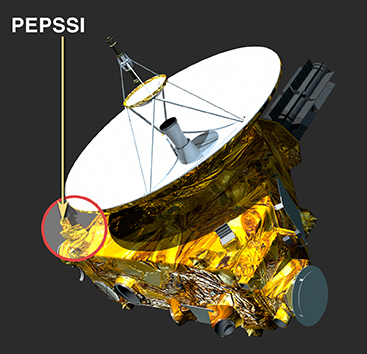We Stand on the Threshold of Discovery

Ten years ago the New Horizons spacecraft lifted off on the journey of a lifetime—aimed at Pluto and beyond. This week, less than 60 days before its closest approach to the famous dwarf planet, the spacecraft is less than an astronomical unit away from its main target. It’s running just fine, and searching for new moons and a possible ring system around Pluto. It has already spotted Nyx and Kerberos, the dimmest of Pluto’s known moons. Any moons or rings that it finds from here on out are worlds that have never before been seen.
The mission to Pluto is catching people’s hearts and minds, and not just because Pluto has been the center of discussion about its planetary status. This distant world has always been something of a goalpost in solar system studies. Until the discovery of more-distant dwarf planets in the Kuiper Belt, Pluto was considered the frontier—the last stop before the stars. In a sense, it still is. New Horizons will swing by Pluto and Charon, and possibly two other smaller worlds in a few years, but after that, the mission’s adventure lies in the stars.
New Horizons is guiding our view of a distant, cold, lonely part of the solar system. From here on out, each of its images will show us something we’ve never seen before now. Its collection of instruments will tell scientists what the conditions are like at this lonely outpost: how cold it is, what the solar heliospheric influence is in this region of the solar system, and possibly what’s hiding beneath the surfaces of Pluto and Charon. Not to mention what’s ON those surfaces. Will we see craters? Geysers? Giant canyons? Cracks?
What do we already know? Pluto’s surface itself is quite reflective, like a fresh snowfall. It also has large markings that range from bright to dark. The surface is covered with ice made up of molecular hydrogen as well as varying amounts of what are called “hydrocarbons”. These are methane and ethane, along with carbon monoxide ices. As of now, that’s about all the scientists know. But, again, in the coming weeks, the view is going to improve dramatically.
What’s happening with the atmosphere of Pluto? We know that much of the thin blanket of air around Pluto is leaving this world through a process called hydrodynamic escape. What drives that?
What’s going on beneath Pluto’s surface? And, for that matter, beneath Charon’s? New Horizons won’t be able to peek beneath the ices, but it can measure the masses of both worlds, and that will give incredible insight into what’s happening in the cores of these two worlds.
From here on out, Pluto is going to surprise us each week and I’ve been following this story and writing about the mission for many months now. If you’ve been following my Pluto and New Horizons stories on this blog, or reading my work at Space.About.com, you’ve seen how fascinating this system is. This mission has been a long time coming. The science teams are already busy with data about the Pluto system that is streaming back to Earth each day. I’m ready to learn more, and I hope you are, too. Stay tuned!



